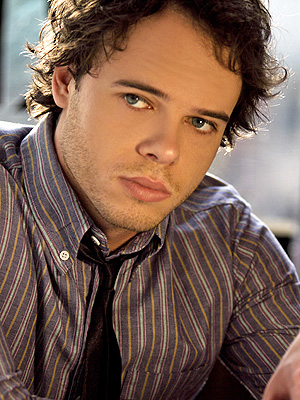A man suspected in a deadly car-to-car shooting in the heart of the Las Vegas Strip was arrested Thursday at a Studio City apartment complex, bringing an end to a weeklong manhunt.
Los Angeles police and FBI agents surrounded the suburban apartment complex in the 4100 block of Arch Drive about noon and ordered Ammar Harris to surrender. Officers said there was a woman inside the apartment where he was holed up; she was not arrested.
Harris, 26, is being held on suspicion of murder and is expected to be extradited back to Nevada.
"This arrest is much more than just taking Ammar Harris," said Las Vegas Sheriff Doug Gillespie, speaking at police headquarters near the Strip. "The citizens of our community as well as tourists who visit and work in the Las Vegas Valley are entitled to a safe community."
Harris — described by law enforcement officials as a man with an "extensive and violent criminal history" — is accused of being the gunman in the Feb. 21 shooting that killed three people, including Kenneth Cherry Jr., an Oakland native and rapper known as Kenny Clutch.
Las Vegas police said Harris opened fire from his Ranger Rover on Cherry's Maserati on Las Vegas Boulevard after an altercation at a valet stand at the Aria hotel resort.
The Maserati then sped into the intersection at Flamingo Road, where it rammed a Yellow Cab, which erupted in flames near the mega-wattage casinos of the Bellagio, the Flamingo and Ceasars Palace. The explosion killed the taxi driver and passenger inside.
Cherry and a passenger in his Maserati were taken to a hospital, where Cherry was pronounced dead. Four other vehicles were involved in the fiery crash, which left three other people with injuries.
"What I can tell you is that Mr. Harris' behavior was unlike any other I've seen, and I've been in this community in law enforcement for 32 years," Clark County Dist. Atty. Steve Wolfson said.
"I cannot imagine anything more serious than firing a weapon from a moving vehicle into another moving vehicle on a corner such as Las Vegas Boulevard and Flamingo."
Even in a city accustomed to spectacle, the shooting and collision were shocking.
On the night of the shooting, Harris was accompanied by three people in his Range Rover, none considered suspects, said Lt. Ray Steiber of the Las Vegas Metropolitan Police Department. On Saturday, Las Vegas police found Harris' black Range Rover at an apartment complex in the city. The district attorney charged Harris with murder even though he could not be located, and a federal magistrate signed off on a charge of fleeing the jurisdiction.
Federal court documents show Las Vegas homicide detectives suspected that Harris may have fled to California because his phone showed he made calls in the state.
According to law enforcement sources, Harris operated as a pimp in Las Vegas. In a video released by Las Vegas police, Harris flashed a fistful of $100 bills as he bragged about the money. He boasted about money, guns, expensive cars and run-ins with the law on social media accounts, authorities said.
On one social media site, using the name Jai'duh, someone authorities believe was Harris posted pictures of stacks of $100 bills and a Carbon 15 pistol.
Harris' record includes a 2010 arrest in Las Vegas on suspicion of pimping-related offenses of pandering with force and sexual assault. He has previously been arrested on suspicion of a variety of crimes in South Carolina and Georgia, authorities said.
Harris is slated to appear in a downtown Los Angeles courtroom Monday for an extradition proceeding.
richard.winton@latimes.com
john.glionna@latimes.com
kate.mather@latimes.com
Glionna reported from Las Vegas. Times staff writer Andrew Blankstein contributed to this report.












